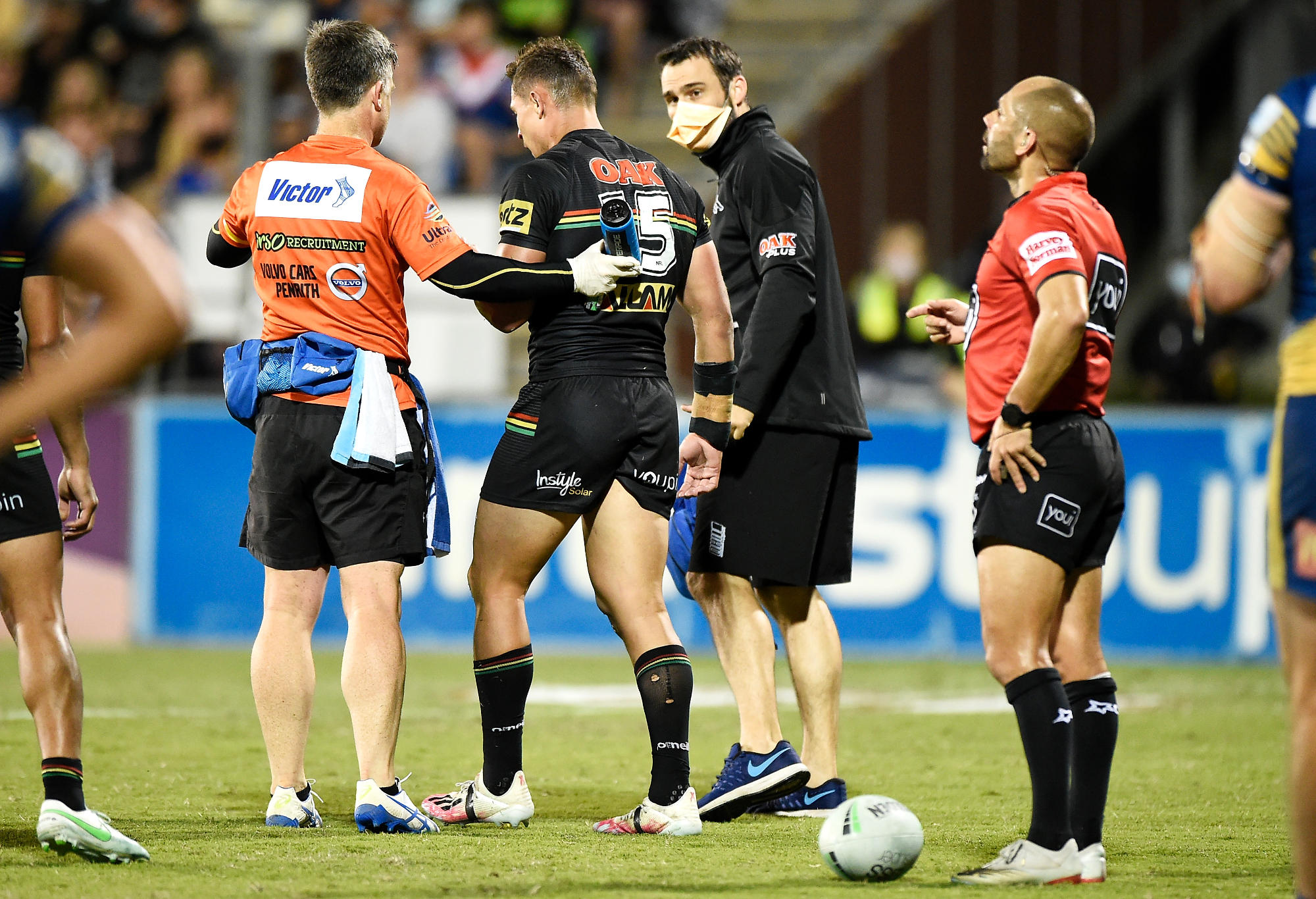Concussion is a hot topic in the NRL at the moment with debate continuing to rage about how best to protect players from themselves.
With the spectre of litigation hanging over pretty much every contact sport in the world, the NRL has taken several steps in recent years to ensure player safety is increased.
But do the concussion protocols do enough to protect the players?
The introduction of an independent doctor in the NRL bunker to spot players that they think need to be thoroughly checked has been a step in the right direction but it has led to confusion among teams and fans.
And how long should players be stood down from training and playing if they have suffered a concussion?
The Roar experts have their say and if you’d like to do likewise, fire away in the comments section below.
Experts Roar – Finals format
I think the concussion protocols are OK. Maybe the NRL could look at having an independent trainer to assess players on field.
And the league should also look to increasing sanctions and advising fans of any clubs who breach the regulations at Graham Annesley’s weekly NRL media briefing.
The NRL, and any professional sport on the planet, needs to listen to nobody else but the neurological experts.
As is always the case in rugby league, there will be agendas driven by players, coaches and administrators on this issue but it’s way too serious to be compromised because clubs don’t want their stars sitting out any longer than they think is necessary.

(Photo by Matt Roberts/Getty Images)
If the people who are qualified in this area believe the NRL needs to sit players out longer, then that should be the case.
At the least, anyone who suffers a concussion should be missing the next round regardless of whether it’s a five, six, seven or eight day turnaround.
On this week’s episode of Head Noise – James Graham’s podcast about concussion, which is compulsory listening for footy fans – neurologist Dr Rowena Mobbs spoke about an appropriate amount of time out after a concussion being probably four weeks.
I thought it was crazy. And then I looked up at the zero medical qualifications hanging on my wall, and reconsidered my response.
If the people who have spent years studying and treating head trauma say the NRL should reconsider its approach to concussion, then we should listen to them, not some banged-up ex-footy player who bemoans a lack of toughness or – worse – that doctors and lawyers are ruining the game.
Doctors are trying to protect the players, and lawyers see the money pit the NRL is staring down if such protection is not provided.
If the experts say players need longer to recover, then they need longer to recover. Oh, and we fans need to accept it, because longer time out for head trauma is all but inevitable as further research is conducted.
This is an extremely challenging topic because I am not a doctor. The processes the NRL currently has in place seem appropriate. The only part that really concerns me is when a player is visibly wobbly or struggling after the tackle and remains on the field. Those players should be taken off immediately and assessed.
I like the HIA, I like the independent doctor and I like players being made to miss a game if they pull up badly from a head knock. With all of the knowledge we have now, we need to do what we can to protect the players. In saying that, this is a contact sport, and while contact to the head is a ‘no-no’, contact to the head will inevitably happen. And the players know this when they make it their profession. I don’t think there is much more that can be done before it gets labeled as an overreaction.

(Photo by Matt King/Getty Images)
If the Seven Spotlight documentary on Mario and Jeff Fenech didn’t scare the heck out of people traditionally dismissive of the seriousness of repeated head trauma in contact sports, nothing ever will.
Admittedly, that group has shrunk considerably in recent times, with most now appreciating the fact that rugby league cannot continue to farewell players in the full knowledge that many of them will have considerable physical and mental health challenges in the future.
The current protocols in play are of course, well intentioned. However, players are still remaining on the field when they should be removed and many are returning to competitive play well before they should be.
Feeling well a few days after a serious head knock does not mean that damage has been avoided and whilst measuring such damage is far from a perfect science, it is time the NRL took a firm stance and erred far more on the side of caution.
Passed HIAs allow players to directly re-enter the fray and should be scrapped. Any obvious physical signs of contact to the head should deem a player unfit for the remainder of the game and a 14-day rest period where more thorough testing and observation can take place needs to be implemented.
Any view that Mario’s problems are a result of the era in which he played and not as prevalent today is false. The bodies are bigger and faster in the modern game and thus, the impact of head trauma, potentially as serious as ever.
Concussion is a huge issue, and one that the league has to take the lead on.
Clubs will actively rort it, as evidenced by the constant real/fake HIAs to waste time, leaving players on when they’ve taken a head knock and players being able to play on short turnarounds.
I’m not a doctor so I don’t know the answer but what we have now is far too lenient and open to abuse.






























































































